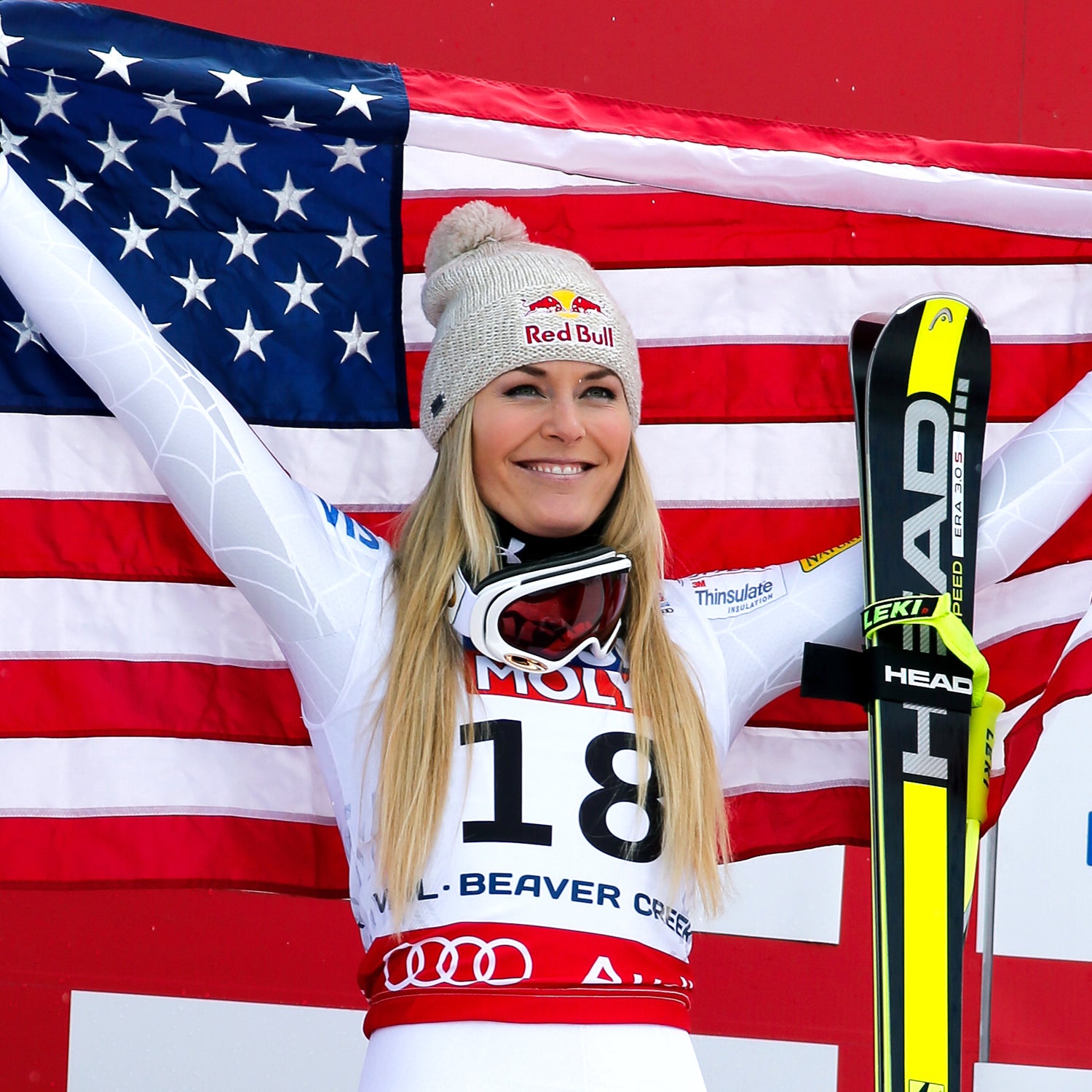Lindsey Vonn made history last month with her 64th World Cup win—the most ever for a female skier—after spending most of 2014 rehabbing a torn ACL. Even more remarkable: she had not one but two major knee surgeries in the past two years.
Many people who tear their ACLs are told it can take at least a full year, post-surgery, to get 100 percent of their strength and function back. For them, Vonn’s return to the slopes, just 10 months after her second operation, may have seemed a bit hasty.
But compared to other professional athletes who’ve battled similar or equally devastating injuries, a recovery like Vonn’s has become standard, if not leisurely. Take , who returned to football just nine months after his own ACL tear in 2012. Or Monster Energy snowboarder , who won a bronze medal in Snowboard SuperPipe at last month’s X Games just two months after having surgery for a fracture, torn ligament, and misplaced tendon in his ankle.
So what is it about the pros? Do they recover more quickly because they’re better athletes, or because they get better care? According to John Xerogeanes, M.D., chief of sports medicine and professor of orthopedic surgery at Emory University Hospital, it’s usually a bit of both.
When an injury occurs—whether it’s a torn ligament or a broken bone—it’s the muscles and tendons around that injury that are so important for recovery after surgery, says Xerogeanes. And compared to amateur athletes, the pros almost always have an advantage there.
“Biology only lets you recover so fast, so it’s not like pro athletes’ cells are going to heal faster than our cells,” he says. “But the other structures around their knees—or whatever they’ve hurt—are so strong and so much better than ours, they’re going to protect the part that’s healing and help it get stronger in less time.”
Pros tend to have another thing going for them, too, one of the same things that drives them into this profession in the first place: an unrelenting desire to overcome obstacles.
Plus, Xerogeanes adds, there’s a good chance that whatever pro you’re comparing yourself to is younger than you. “We tend to think of them as more experienced, so it’s easy to forget that most of them are only in their 20s, when the body is much better at repairing itself.”
Motivation also factors in to healing. Paid-to-play athletes also tend to take bigger risks with earlier returns, because they’ve got Olympic Games or multi-million dollar contracts on the line. Almost anyone who’s dedicated enough can return to play or competition of a major surgery, says Xerogeanes. But for most of us, there’s little downside to taking it a bit easier and easing back into things slowly.
Podladtchikov, whose initial return-to-competition prognosis was three months, worked hard to make it back on his board in time for January’s X Games. “I had physio sessions over an hour every day the first three weeks, a physical trainer for couple of times a week, acupuncture sessions, different braces and basically a lot of movement exercises from the beginning,” he says. “The foot never really had time to be lazy.”
Pro athletes on teams are going to get daily, one-on-one care, says Xerogeanes. “You’re right there in the facility, the trainers come to you, and rehabbing for several hours a day becomes your top priority over anything else—otherwise you’re not going to get a new contact, and you’re not going to continue getting paid.” For someone with a full-time job and plenty of other responsibilities, recovery usually consists of going to a physical therapist twice a week and completing exercises at home, on her own, the rest of the week.
Pros tend to have another thing going for them, too—one of the same things that drives them into this profession in the first place: an unrelenting desire to overcome obstacles.
“I took [recovery] as a challenge, almost like learning new tricks,” says Podladtchikov. “It was similar to that feeling where everyone thinks you can’t do it but you try to prove them wrong. I definitely put all my energy towards healing as soon as I got hurt.”
So what about these expensive technologies and state-of-the-art treatments the pros are using in these top-notch facilities? “The media talks about stem cells, PRP injections, cool rehab machines—but everyone has access to those if you pay enough money, and honesty they’re all unproven anyway,” says Xerogeanes. “You hear about antigravity treadmills, but you can get the same benefits running underwater in a pool.”
The biggest benefit pro athletes have is their doctors and health-care professionals, he says. “They have access to very good trainers, weight coaches, physical therapists—and when you have them work together as a team, you’re going to get the best care.”
And, of course, it doesn’t hurt that their rehab is largely subsidized by their sponsors. Vonn, for example, has touted the benefits of throughout her recovery—products that anyone can buy in the store, of course, if you’re willing to pay for them.
But even with all of that one-on-one care, those countless gizmos, and core strength, pros don’t always heal with superhuman speed.
Vonn’s initial return to skiing after her February 2013 surgery is one example of when a fast recovery didn’t work out so well: She re-tore her ACL during a training run that November, forcing her to miss the Sochi Olympic games and have that second surgery in January 2014.
“Lindsey’s surgeon probably didn’t do anything differently on her than he did on 20 other ski-team members. The difference is that Lindsey had to be back at a certain time, and so she rolled the dice with an early return,” says Xerogeneas, who was not involved in her treatment. “She’s a great athlete, but biologically she just wasn’t strong enough.”
Plenty of other athletes have returned early from surgery with less miraculous results, or have needed additional months to fully recover—, for example, had the same knee surgeon as Adrian Peterson but struggled upon his return to the field; and basketball player has been criticized for his less-than-speedy recovery from injuries.
Bottom line: With enough money and free time, anyone can follow the same rehab program as the pros do. And with an aggressive recovery plan, (almost) anyone can make an early comeback. What money can’t buy, however, is the pro athlete’s overall strength, work ethic, and motivation, all of which help speed recovery.


